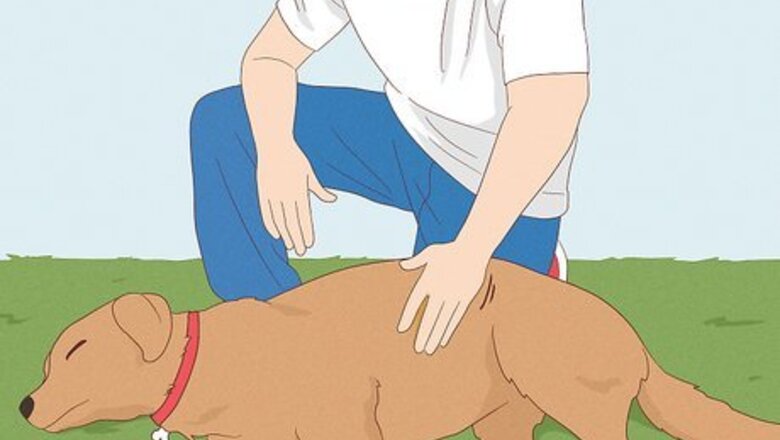
views
Giving a Dog CPR
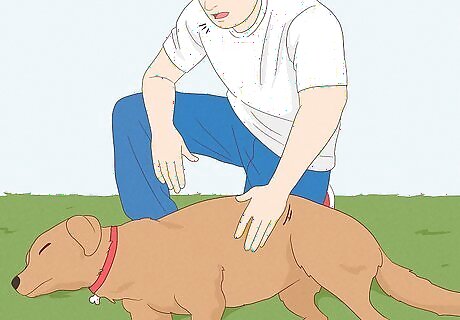
Attempt to stimulate the dog by gently shaking it or calling its name. Before performing CPR, make sure the dog is unresponsive. Try to wake it up by gently shaking it or saying it's name. Only give CPR if the dog is not responding.
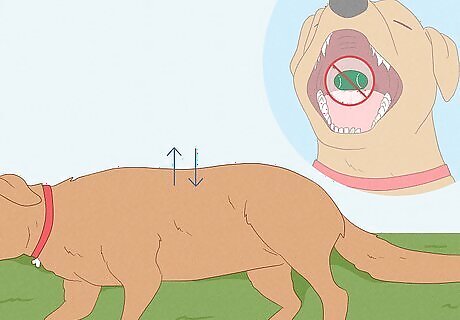
Watch to see if the dog’s chest is rising and falling. If it’s not, check the airway for blockages. Open the dog’s mouth, pull the tongue towards you, and look in the back of the throat. If you see something, carefully try to remove it with your fingers. If the dog reacts while you try to remove a foreign object, stop and remove your hand from it's mouth.
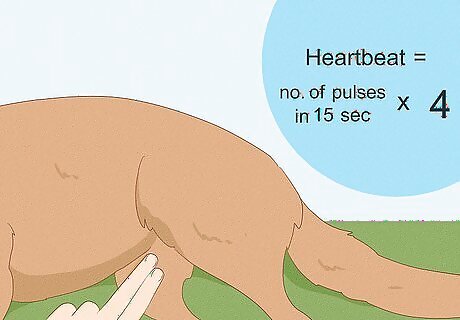
Check for a heartbeat. Place 2 fingers on the inside of either of the dog's thighs where the leg and body meet or under the left armpit. You may have to lift the dog’s leg. Count the pulses for 15 seconds and then multiply that number by 4. This is the number of heartbeats per minute. Small and medium-sized dogs should have a pulse of 70 to 140 beats per minute. Large dogs should have a pulse of 50 to 120 beats per minute. Only perform CPR if you can’t feel or hear a dog’s heartbeat and it's not breathing.

Call for help if the dog isn’t responsive. Yell out to a friend, family member, or stranger (if you’re in a public place). Ask them to contact a vet or animal hospital because your dog isn’t breathing. If no one’s around, quickly dial the number yourself and put the phone on speaker while you start CPR.
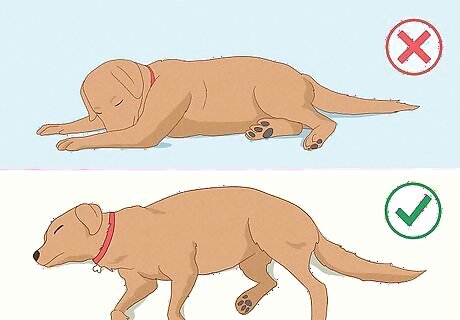
Lay the dog on its side to prepare for CPR. It doesn’t matter which side, as long as the dog is on a flat surface with its legs stretched out.
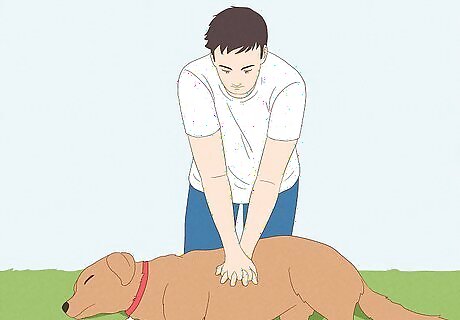
Position yourself behind the dog with your hands on its chest. Kneel or stand behind the dog with your knees against its back. Interlock your fingers over the chest, putting the most pressure against the heel of your hand. Angle your shoulders above your hands, and keep your elbows locked. You may need to lean forward slightly to achieve this. For smaller dogs, place your hands around the dog’s rib cage. For larger dogs, place the heel of your interlocked hands on the widest part of the dog’s rib cage.
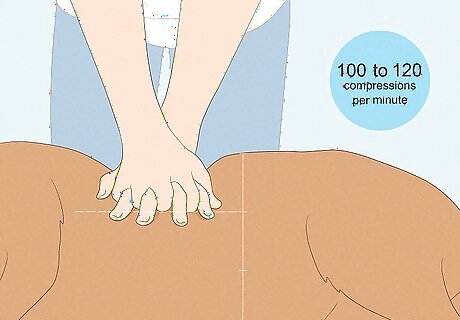
Give 100 to 120 compressions per minute. Press the heels of your hands into the dog’s chest about 1/3 or 1/2 way down. Keep a steady and quick pace of compressions for 5 minutes, making sure to release the pressure completely before each compression. For smaller dogs, use your thumb and fingers to press the chest 1/3 of the way down. For larger dogs, press the chest 1/4 of the way down. To stay in rhythm, sing the song “Staying Alive” and press down on each “ah.”
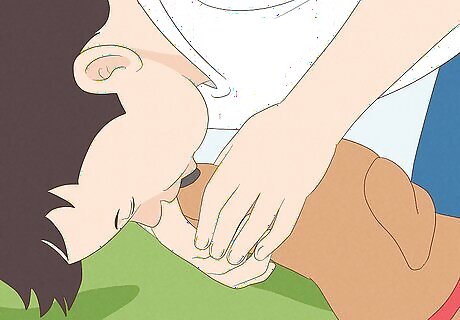
Integrate rescue breaths every 30 compressions or 6 seconds. If you’re performing CPR on a dog by yourself, give 2 rescue breaths after 30 compressions. If there are 2 or more people with you, give breaths while chest compressions are being done every 6 seconds. Cup your hands over the dog’s snout, closing its mouth, and blow into its nose. Make sure your mouth seals over the dog's nostrils. After 2 minutes of working with a partner, switch roles so the person giving breaths is now doing compressions. Check for a pulse after 2 rescue breaths if you’re by yourself or when you switch roles with a partner.
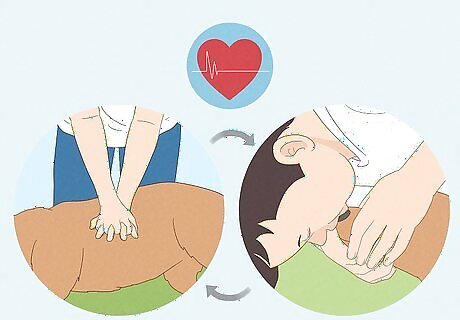
Continue CPR if the dog is still unresponsive after 5 minutes. Check for a heartbeat and signs of breathing after your first cycle. If there’s still no response, start another cycle of compressions. Up to 3 cycles can be done to revitalize a dog, and after that, there’s nothing more that can be done—but know that you did everything you could.
Caring for a Dog After CPR
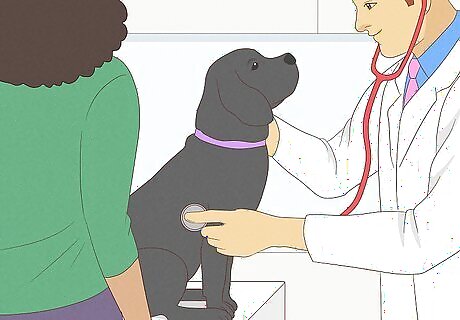
Seek emergency care after giving chest compressions. Always bring a dog to a vet clinic or hospital after performing CPR. The strong compressions saved the dog’s life, but they can leave behind broken ribs and stress. But don’t worry! Veterinarians will be able to monitor the dog’s behavior and make sure everything’s as good as new.

Follow the vet’s suggestions on further care. Dogs can collapse and stop breathing because of heat stroke, shock, or choking hazards. Because of this, it’s important to listen and follow through with the veterinarian’s instructions to make sure the dog doesn’t need CPR again.
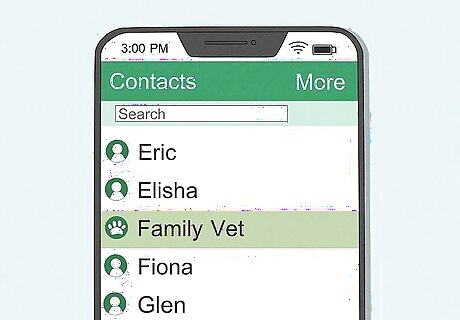
Have a plan set in place for the future. Whether you’re reading this article because you need to give a dog CPR or want to learn something new, it’s always important to have an emergency plan just in case. Put your vet or animal hospital’s number in your phone and know that you now know how to give life-saving resuscitation.




















Comments
0 comment